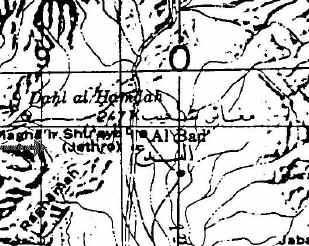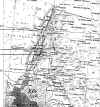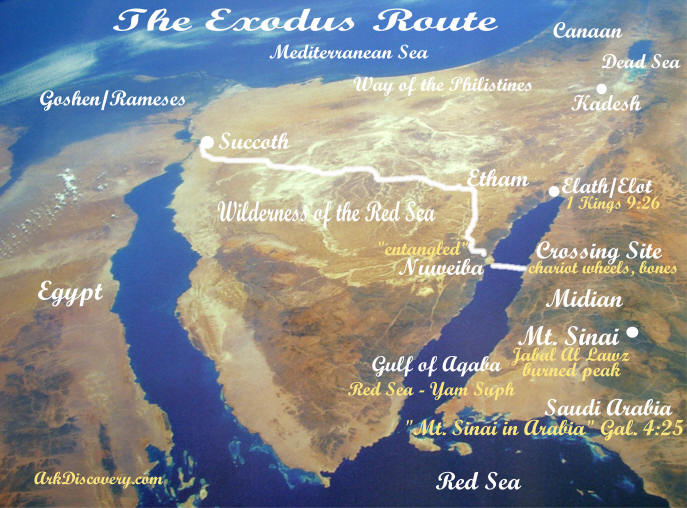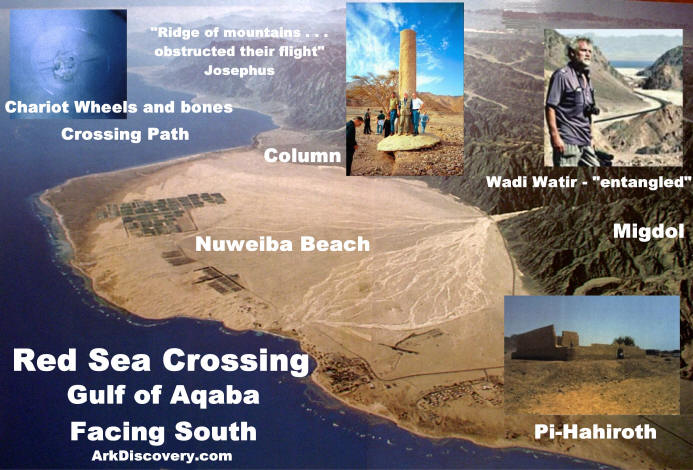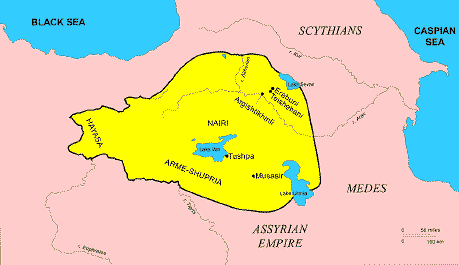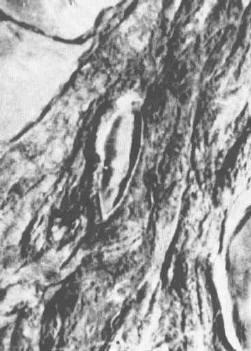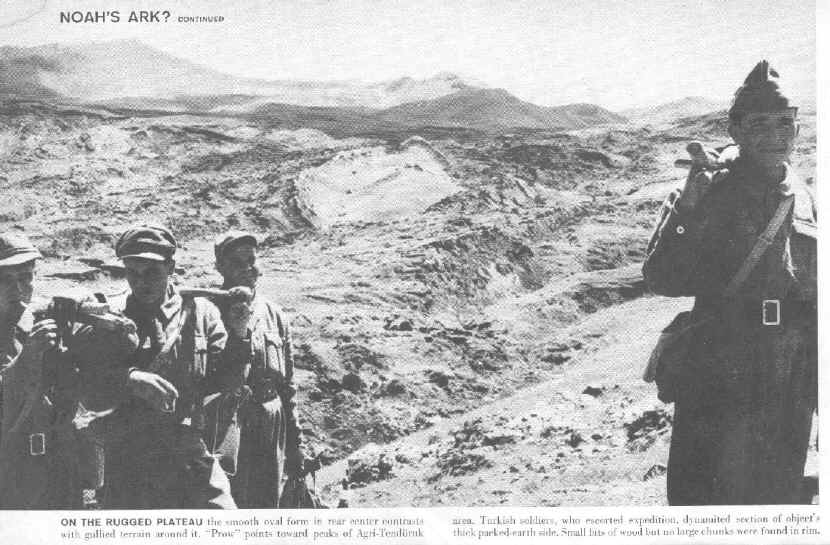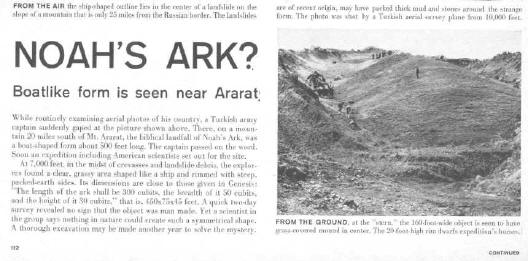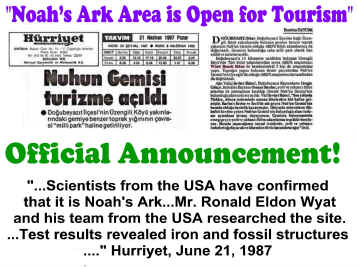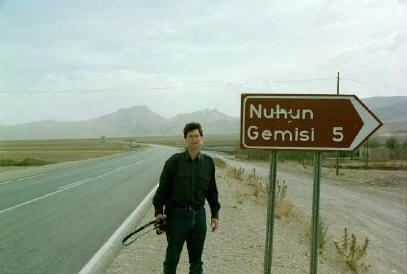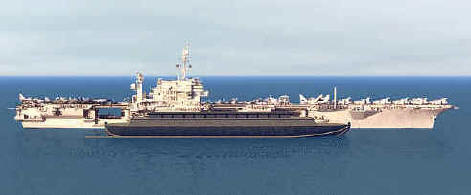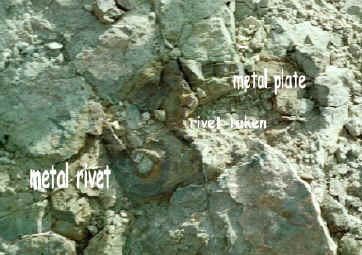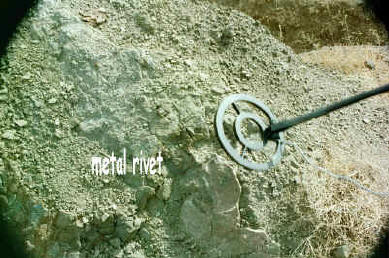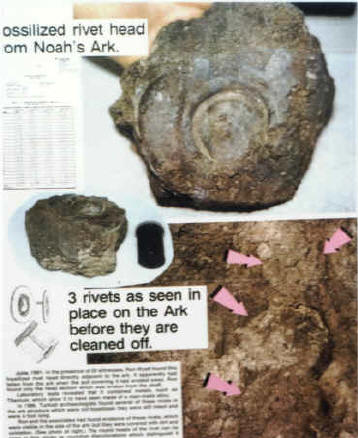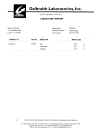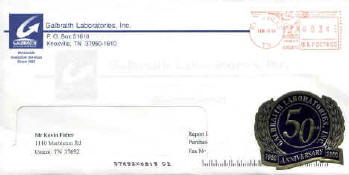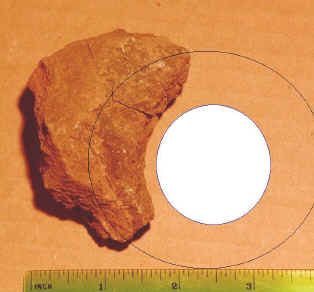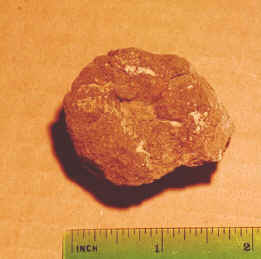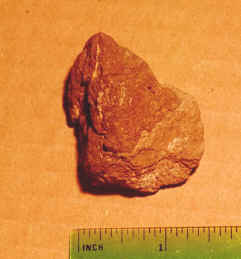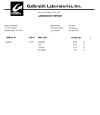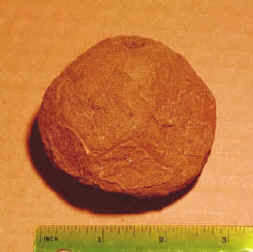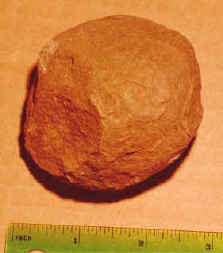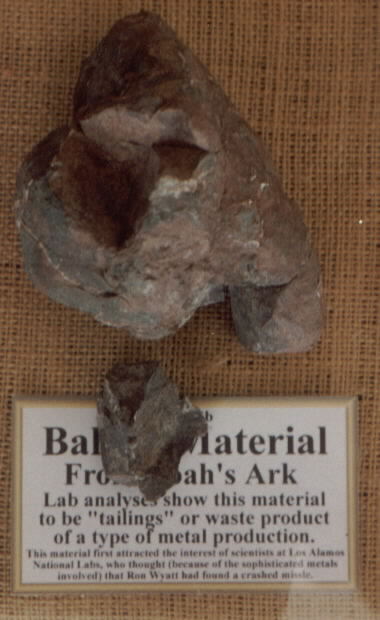

The Blackened Peak of the REAL Mount Sinai
found by Ron Wyatt
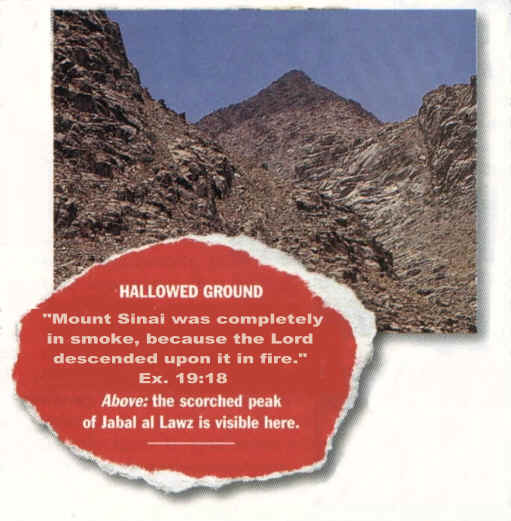
Above - Vanity Fair Magazine published a large article on the discovery of this mountain in the February 1998, issue, and featured many photos. Unfortunately the article centers around two gentlemen who came along after Ron Wyatt, but are claiming to have found the mountain. Mr. Wyatt told David Fasold about the discovery who then told the two men who went out in 1988, to see the mountain.
Ron was on CBS News in 1984, telling about his trip to see the mountain and what he found there. He had entered the country without a visa and was thought to be a spy. He nearly died in prison there. Here the magazine quotes Ron Wyatt:
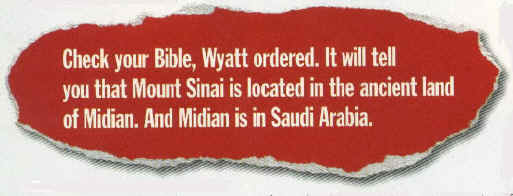
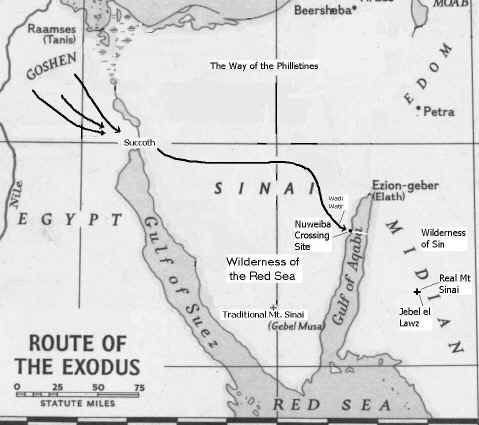
Bible Texts Locate the Real Mount Sinai
-
"Moses fled from the face of Pharaoh and dwelt in the land of Midian; and he sat down by a well" Ex. 2:15 NKJV. Maps indicate Midian is near the border of the Gulf of Aqaba in Northwest Saudi Arabia, in the area shown on the map above.
-
"And she [Zipporah] bore him a son, and he called his name Gershom; for he said, "I have been a stranger in a foreign land" Ex. 2:22. Moses was in a different country, away from any Egyptians in Saudi Arabia. He could not have been in the Sinai Peninsula, as that area was Egyptian controlled territory, full of Egyptian mines and communication towers. Moses would have been easily captured in that area.
-
"Now Moses kept the flock of Jethro his father-in-law, the priest of Midian. And he led the flock to the back of the desert, and came to Horeb, the mountain of God" Ex. 3:1. Jethro lived in the vicinity of Mount Sinai. Jethro was the leader of the Midianites who were found in this area, "East of the Gulf of Aqaba in the northwestern regions of the Arabian Desert" Britanica. When researching the location of Mt. Sinai in Saudi Arabia that Mr. Wyatt proposed, I went to the East Tennessee State University Library and found two extremely detailed maps of Saudi Arabia. On BOTH maps I found the name "Jethro" next to the town of Al Bad, which is near Jebel el Lawz, the correct Mt. Sinai! See maps below. Jethro was Moses' father-in-law as we saw in the texts above. He was from the town of Al Bad, according to the local people who live there today, which is only about 15 miles from Jebel el Lawz. The local people there today told Ron Wyatt that Jethro was from that area.
-
"So He [God] said, 'I will certainly be with you. And this shall be a sign to you that I have sent you: When you have brought the people out of Egypt, you shall serve God on this mountain'" Exodus 3:12. Moses was to bring the children of Israel from Egypt to this same mountain in Midian, near Jethro's home, in a foreign land.
-
"For this Hagar is Mount Sinai in Arabia" Galatians 4:25. Here we are clearly told where the mountain should be located, in Arabia. But where is Arabia? "...It is bordered on the W by the Gulf of Aqaba and the Red Sea" Britanica. This clearly rules out the Sinai Peninsula, but it does include Saudi Arabia of course.
-
"Then, at this saying, Moses fled and became a sojourner in the land of Midian, where he had two sons. And when forty years had passed, an Angel of the Lord appeared to him in a flame of fire in a bush, in the wilderness of Mount Sinai." Acts 7:29,30. All historically accurate maps, such as some produced by secular companies such as National Geographic (see map at top of page), show Midian in Saudi Arabia. Unfortunately, maps placed in Bibles by the publishers may have Midian in the Sinai Peninsula in order to fit tradition, but not the Bible or the historical record.
Josephus Said It Was the Highest Mountain
Josephus said that Mt. Sinai "was the highest of mountains in the city of Madian" which is just outside the town of Al Bad. Jebel el Lawz is the highest mountain in the upper two thirds of the country. Also, Philo said Mt. Sinai was located east of the Sinai Peninsula and south of Palestine.

Above - Aaron Sen stands in the encampment area of Mt. Sinai with the blackened peak in the distance. www.wyattarchaeology.com
Layout of Mountain & Artifacts
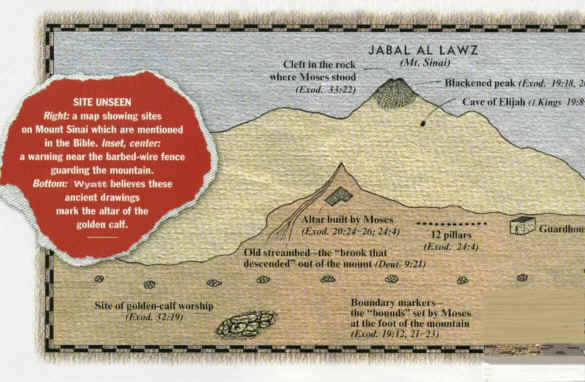
Mr. Wyatt is the original modern-day discoverer of the real Mount Sinai. The upper 200 feet of Jebel el Lawz is burned black, as we have seen in previous photos above. The Saudi Government will confiscate any photographs of the mountain and will not allow any tourists into the country, but U.S. Government satellite photos and a few private photos smuggled out of the country reveal the secret mountain by its unique blackened peak. Unlike the traditional site, there are thousands of acres in which to encamp at the base of this mountain, while clearly being visible from the mountain top.
Tree Between Two Boulders
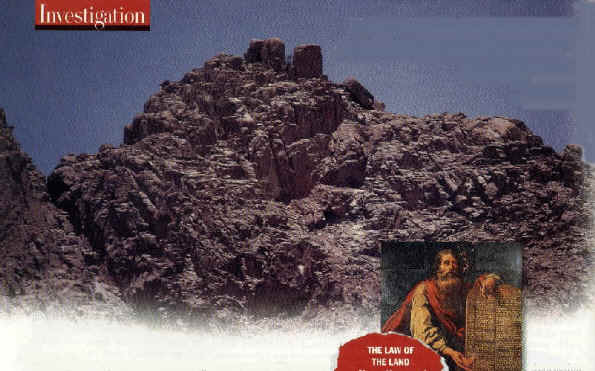
Top portion of photo shows a solitary tree between two boulders.
Mt. Sinai Found - Part II
The Altar of the Golden Calf


Above left - A dozen giant boulders are stacked in the encampment area and reveal 12 ancient Egyptian petroglyphs of bulls. It is believed the golden calf was placed upon these rocks. Large altars are found on the east and west sides of the mountain. (two upper photos Viveka Ponten) (two lower photos courtesy Aaron Sen
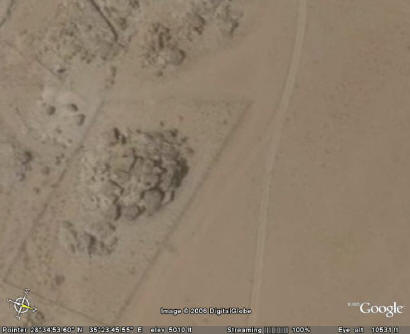
Above: Using Google Earth you can see the fence around these large rocks, out in the encampment area.
Rocks: 28 34' 52.78" N 35 23' 46.06" E
Guard house & fence: 28 35' 12.50" N 35 23' 08.36" E
Government Acknowledges Archaeological Significance

Above - Aaron Sen stands next to government sign at base of Mt. Sinai acknowledging this archaeological area. Photo Aaron Sen www.wyattarchaeology.com
After Mr Wyatt found this site in 1984, and visited it again a year later, the Saudi government erected a fence and a guard house preventing access to the Holy Precinct area at the foot of the mountain on the eastern side. The sign above states, "Archaeological area...unlawful to trespass, subject to penalty." When Ron and his two sons made their fist trip into Saudi Arabia, they were accused of being spies and were held prisoner for two months, awaiting execution. After Ron helped to heal many sick prisoners, the authorities listened to his story and accompanied him to the column at the Saudi beach, then to Mt. Sinai. It was then they believed him, but they had to confiscate his photographs before letting him go.

Above - Aaron Sen stands at base of Mt. Sinai with a broken column at his feet. www.wyattachaeology.com

Aaron Sen camps overnight in the same spot where Moses and the Children of Israel lived for a year at Mt. Sinai. www.wyattarchaeology.com
The Rock which Flowed Forth Water
On the western or back side of the mountain is Rephidim where Moses and the Children of Israel first encamped before reaching Mt. Sinai. It was here that Moses struck the rock, above, which gushed forth large quantities of water. The giant 60 foot rock is on a 300 foot tall hill, and has obvious signs of water erosion, yet it is located in this desert region. The fissure in the rock is so large that you can walk easily through it. A square 20 foot altar is also at this site, which was built after the Children of Israel defeated the Amalakites. The Amalakite territory covered "south of Judah and probably extended into northern Arabia" Britanica.
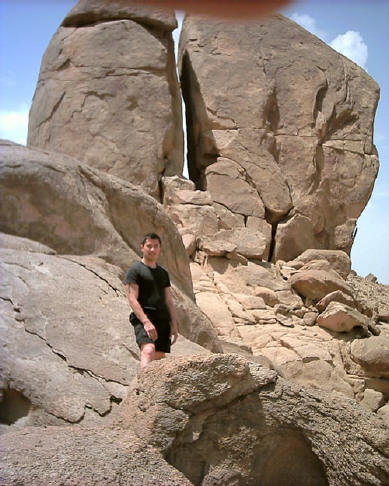
Above - Aaron Sen stands at base of the giant split rock which God provided for the Children of Israel. www.wyattarchaeology.com
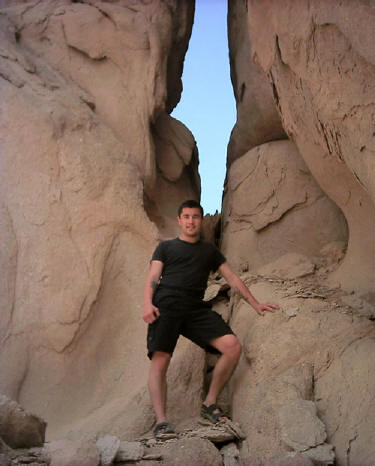
Above - Aaron Sen stands in the split of this giant rock. Notice the obvious signs of erosion,
in this desert region.
Some Television Coverage
Hershel Shanks, editor of Biblical Archaeology Review was quoted in Newsweek that "Jebel el Lawz is the most likely site for Mount Sinai." Dateline NBC has featured Jebel el Lawz in one of its reports.
